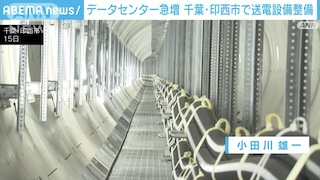May 08 (News On Japan) - For all Japanese businesses, safeguarding the health and safety of employees should be an absolute top priority.
Workplace injuries and accidents don't just affect individual wellbeing, they also disrupt operations, productivity, and brand reputation. Maintaining strict safety standards creates an environment in which people can thrive.
While fire prevention, hazardous materials protocols and other high-profile safety policies rightly get attention, one often overlooked yet vital measure is regular electrical appliance testing. Faulty, outdated, or damaged devices pose a serious electrocution and fire hazard that should not be underestimated.
Adopting formal procedures for routinely inspecting and verifying the safety of all electrical equipment used throughout facilities means organisations can prevent many preventable accidents before they ever occur.
Electrical Hazard Awareness
To understand why scheduled appliance inspections are so crucial, it is important to recognise the risks posed by faulty equipment, deteriorated wiring, and outdated components. Even small items like kettles, fans, or laptop chargers can become dangerous over time.
Shock Dangers
Damaged power cords or deteriorated plugs where inner conductors are exposed present risks of electric shocks through direct contact. An employee could brush against an energised loose wire or grab a device unaware of an internal fault.
Frayed or cracked insulation allows leakage current that might only deliver mild tingling sensations in low doses. But higher voltage shocks are incredibly painful, causing muscle spasms, burns and potential soft tissue damage as well.
Fire Hazards
Electrical faults causing excessive heat buildup in appliances, connections, or cabling create serious fire dangers too. Damaged power leads or high-resistance areas like loosened wiring connections overheat rapidly.
Once high enough temperatures are reached, surrounding combustible surfaces like wooden desks, drapery or packaging materials can ignite, allowing flames to quickly spread out of control before being noticed.
Explosion Potential
In more extreme industrial workplace environments where flammable vapours, gases, or airborne dust particles are present, the worst-case scenario from an electrical fault could potentially trigger an explosion if ignition occurs.
While less common than shocks or fires, this low-probability yet high-consequence risk makes appliance safety a priority in certain facilities and job sites.
Understanding these preventable hazards means the importance of safeguarding employees through consistent appliance testing becomes clear. The costs of not doing so put your people and organisation at unnecessary risk.
What Is Appliance Testing?
So precisely what processes are involved with rigorous electrical appliance examination? In line with Japanese regulations, it centres around formal multi-step inspection and verification protocols to ensure equipment remains safe for use.
Visual Inspections
The most basic step involves qualified inspectors physically examining every single electrical item for any visible signs of potential hazards. This includes carefully checking for damage to outer casings, loose or frayed cabling, manufacturer modifications, etc.
Portable electronics, tools and appliances additionally get examined for any heavy wear and tear or environmental factors like moisture exposure that could affect their ongoing safety. Devices failing this direct visual inspection need to be removed from service as soon as possible.
Portable Appliance Tests (PAT)
For portable equipment that passes visual assessment, the next phase involves comprehensive portable appliance testing (PAT) using specialised safety analysis instruments. This rigorous examination verifies whether devices remain fully functionally safe.
Dedicated PAT testers systematically check criteria like insulation resistance, earth bonding continuity, polarity and load current values against established safety thresholds. Only items meeting all strict electrical safety criteria earn PAT test labels signifying approval for continued operation. Others get isolated for repair or permanent disposal.
Fixed Installation Checks
On larger commercial/industrial sites, any fixed electrical installations like distribution panels, hard-wired equipment, and lightning protection systems also require formal assessments beyond just portable appliances.
Qualified electrical engineers perform thorough inspections, testing and verification of these installations to identify any design flaws, deterioration or operational faults that could pose safety hazards. Comprehensive documentation records all findings.
Inspection Frequency
How often appliance testing must occur depends on the specific workplace environment and types of equipment involved. Most portable electronics in typical office settings require professional inspection every 1-2 years.
For factories, workshops, or construction sites where tools endure heavier use and environmental extremes, this interval shortens to around 6-12 months. Moveable equipment and extension leads that are prone to frequent relocation may require 3-6 month testing cycles.
Documented risk assessments for each facility determine appropriate re-inspection intervals based on equipment usage patterns, environmental factors, appliance ages and any history of previous safety issues. Higher-risk workplaces require more vigilant testing routines.
Record-Keeping Essentials
Maintaining accurate, up-to-date documentation is absolutely vital. Formal test logs must record all appliance details, inspection dates, test results, pass/fail status and any repair or replacement actions taken.
Having comprehensive paperwork readily available shows compliance during unannounced audits by regulators. These records serve as evidence of reasonable safety precautions being taken by the company.
Beyond written logs, you will also notice passed appliances receive durable re-test labels clearly displaying the next scheduled inspection due date. These colour-coded PAT test labels provide clear visual confirmation that equipment has undergone proper safety verification.
Employee Involvement
While facility managers oversee implementing the appliance testing programme, training all employees about basic electrical safety awareness is equally essential. Staff should learn how to visually monitor the condition of equipment they use routinely.
Teaching everyone to recognise potential hazard warning signs that should be reported for professional assessment means you create a culture of safety vigilance where workers play an active role. When everyone understands prevention, accidents become much less likely to occur.
Regulatory Compliance
Beyond solely protecting workers, though, stringent electrical equipment testing is a legal obligation for Japanese businesses under workplace health and safety laws. Employers have a duty to maintain safe environments by controlling risks.
Industry best practice guidelines around implementing risk-based periodic inspection, testing and condition monitoring programmes for electrical installations and portable equipment are considered reasonable due diligence steps.
Documenting consistent appliance checks tailored to site-specific hazard assessments means organisations demonstrate regulatory compliance during audits or legal proceedings. Absence of such formalised safety protocols opens companies to liability risks.
Conclusion
Ultimately, diligent adherence to appliance testing schedules is an affordable investment that safeguards your workforce while shielding the company from penalties or negligence claims should any serious incidents occur. There is simply no viable excuse for disregarding this relatively straightforward safety obligation that prevents serious harm.















